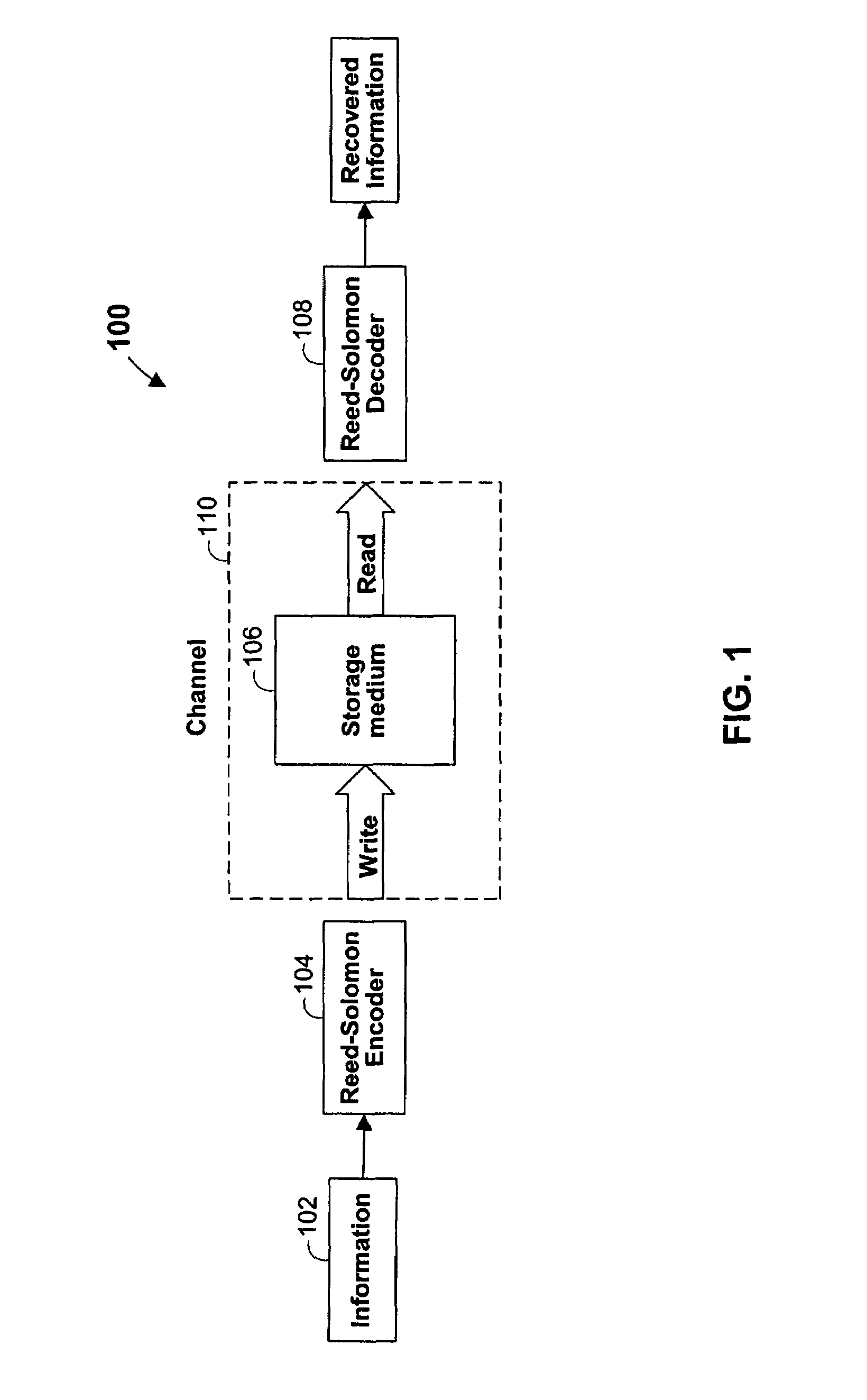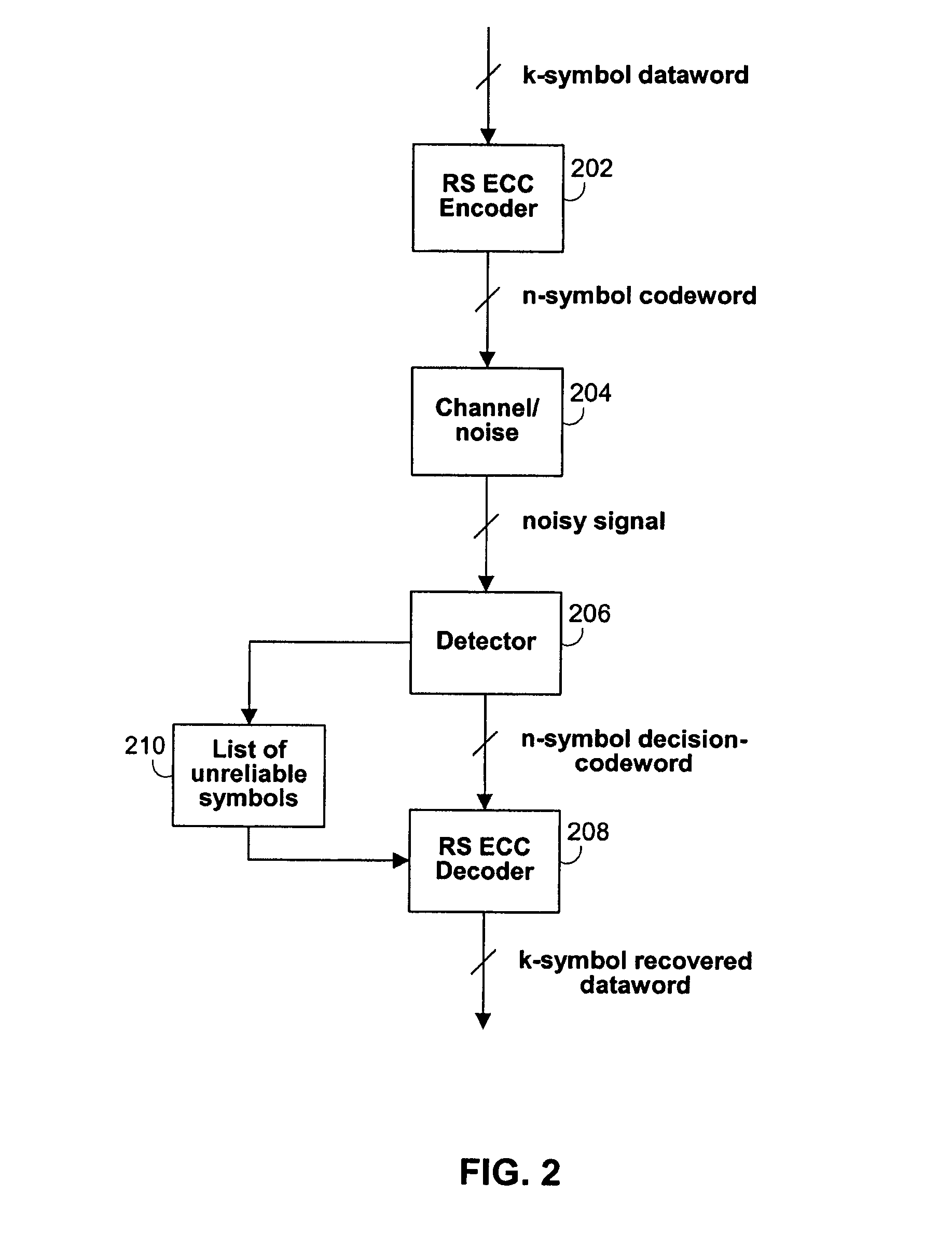Architecture and control of reed-solomon error-correction decoding
a technology of error correction and error correction, applied in the field of reed-solomon error correction codes, can solve the problems of undeveloped processing technology, limited practical considerations, and inability to adapt to the reed-solomon ecc in certain applications
- Summary
- Abstract
- Description
- Claims
- Application Information
AI Technical Summary
Benefits of technology
Problems solved by technology
Method used
Image
Examples
case 1
[0052] deg(Λ(x))
Λ(e1)(x)=Λ(x)+axΛ(x)+bxB(x) (EQ1)
B(e1)(x)=Λ(x)+cB(x) (EQ2)
case 2
[0053] deg(Λ(x))≧deg(B(x))+2
Λ(e1)(x)=Λ(x)+axB(x)+bx2B(x) (EQ3)
B(e1)(x)=xB(x)+cB(x) (EQ4)
where the variables and their computations are described by the Burd reference. Also, the Burd reference describes a way to predict the validity of an error indicator, which will be referred to herein as the “validity test.” Specifically, when there is one extra syndrome, the validity test is:
[0054]∑i=0S2t-iΛi=0=0,(EQ5)
and when there are A extra syndromes, the validity test is:
[0055]∑i=0S2t+j-1-iΛi=0,i=1,…,Δ.(EQ6)
The upper bound of the summations are not specified to indicate that the degree of the polynomials in the equations can vary. One of equations EQ5 and EQ6 is used depending on the number of extra syndromes. When the equality or equalities are determined to be true, the new error locator polynomial can be presumed to be valid and can be passed to a Chien search module where it's validity can be verified. From here on, it will be assumed that list decoding uses iterative decodin...
PUM
 Login to View More
Login to View More Abstract
Description
Claims
Application Information
 Login to View More
Login to View More - R&D
- Intellectual Property
- Life Sciences
- Materials
- Tech Scout
- Unparalleled Data Quality
- Higher Quality Content
- 60% Fewer Hallucinations
Browse by: Latest US Patents, China's latest patents, Technical Efficacy Thesaurus, Application Domain, Technology Topic, Popular Technical Reports.
© 2025 PatSnap. All rights reserved.Legal|Privacy policy|Modern Slavery Act Transparency Statement|Sitemap|About US| Contact US: help@patsnap.com



